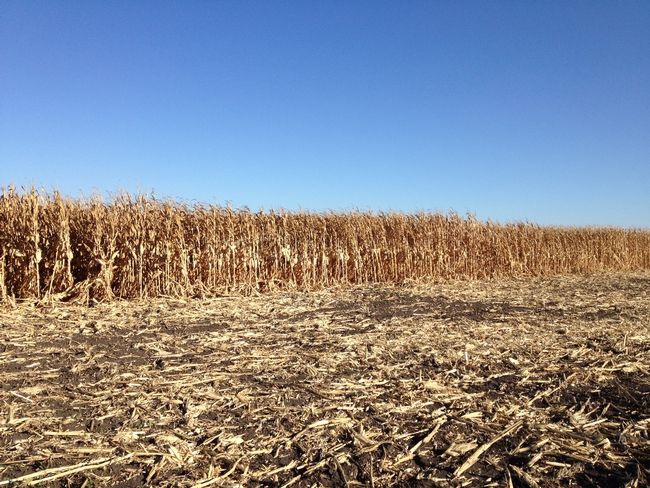It is the time of year when the harvest of our summer crops has concluded. Some growers may be planting small grains, and let us hope that winter rains nourish these crops. I received an inquiry from a grower at the end of harvest regarding nutrient removal with the harvest. This grower, in particular, had questions about how much potassium (K) is removed with the grain and straw/stover of a crop. Alternatively, we can think about how much K is added to the soil when crop residues are incorporated. This grower farms on a low K soil in the Delta and wants to know how much K could be available for his tomatoes next season, a crop that has high K demand. 
The California Department of Food and Agriculture Fertilizer Research and Education Program (CDFA FREP) provides crop fertilizer guidelines for nitrogen (N), phosphorus (P), and K. These guidelines were developed by Daniel Geisseler, Nutrient Management Specialist at UC Davis, using research results from California and elsewhere when California information was not available. The guidelines for wheat state that the concentration of K in the grain is 0.4-0.5%, and the concentration of K in the straw is approximately 1.5%. What this means is that for a wheat field that yields 3 tons/acre, 24-30 lbs K/acre would be removed with the grain (0.004 or 0.005 * 6000 lbs grain/acre = 24-30 lbs K/acre). Likewise, 90 lbs K/acre (0.015 * 6000 lbs straw/acre = 90 lbs K/acre) would be removed with the straw if the straw is not incorporated, assuming that approximately one ton of straw is produced per ton of grain. For corn, the grain is approximately 0.4% K, and the stover is about 1.5-2.5% K. Whether the corn is harvested for grain or silage, approximately 40 lbs K/acre will be removed with the grain at harvest (assuming a 5-ton crop). If the corn is harvested for silage, or if the stover is removed, then approximately 150-250 lbs K/acre will also be removed with the stover (again, assuming a 5-ton crop). If the stover is incorporated, then the grower is returning this amount back to the system.
The grower also asked how soon the K would be available for a subsequent crop (like his tomatoes) if he incorporates the crop residues. To get an answer for this question, I consulted with UC Davis graduate student, Jordan Wade, and UC Davis professor of biogeochemistry, Will Horwath. Both of them surmised that the K should become available fairly quickly because K is not a structural component of the plant. Contrasting K and N, for example, K is floating around in the cells in a soluble form; whereas, N is bound with carbon, forming structural parts of the plant. K is in a form that plants can use (it does not need to be mineralized into a plant-available form, as with N), so when the crop residue is incorporated and breaks down, the K should be readily available for plants, unless it gets adsorbed to soil particles.
In agricultural areas where little-to-no “maintenance” K has been applied over the years, it is possible that crops have depleted soil K. The FREP guidelines recommend applying K to wheat fields if the pre-plant soil test is less than 40 ppm. In corn, it is recommended to apply K if the pre-plant soil test is less than 50 ppm. It is recommended to take pre-plant soil samples for nutrient testing before each new crop.